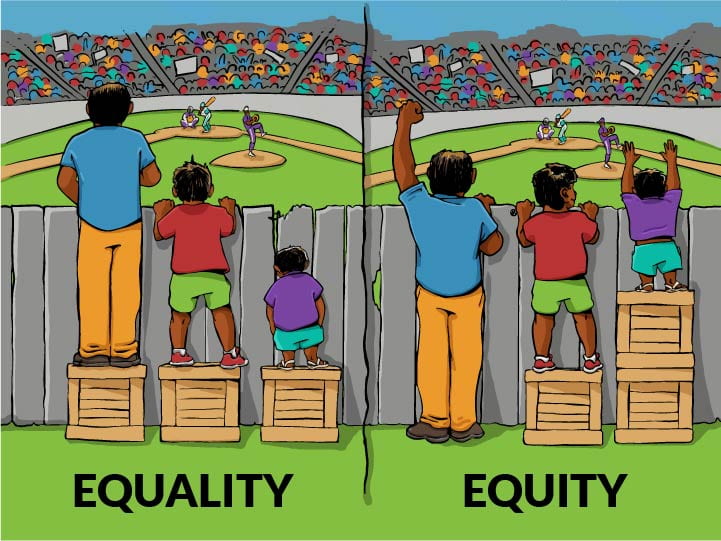The inclusion of Science, Technology, Engineering, and Mathematics (STEM) subjects in education fosters diversity and provides opportunities for students from various cultural backgrounds to engage in a comprehensive and enriching educational experience.
Culturally responsive teaching is a pedagogical approach that utilizes the cultural backgrounds, experiences, and perspectives of diverse students to enhance and personalize their learning experiences (Culturally Responsive STEM Committee, 2021). It goes beyond merely recognizing cultural differences; it actively incorporates these differences into the teaching process to create a classroom environment where all students feel valued, respected, and empowered to participate meaningfully.
Adopting this approach entails tailoring teaching methods to align with students’ cultural experiences, thereby enhancing the relatability and engagement of the learning content (Thompson & Perez, 2021). Educators are tasked with actively seeking and integrating diverse perspectives into their teaching strategies, fostering an environment where students feel acknowledged and valued. As the educational journey unfolds, continual reflection and adaptation become crucial, ensuring responsiveness to the ever-changing cultural dynamics within the learning environment.
Promoting Cultural Responsiveness in Online STEM Education
Educators who are committed to fostering an inclusive classroom that celebrates and respects students’ diverse backgrounds can empower all learners to thrive in a transformative academic environment. Here are some strategies that educators can use to help them do so:
Make Everyone Feel Welcome: Create a friendly online space where students from divergent backgrounds feel comfortable and respected. For example, discussion boards where students share their cultural perspectives could foster a positive environment, ensuring everyone feels valued and respected.
Use Diverse Examples and Culturally Relevant Resources: Include diverse types of resources and examples in your lessons to make sure everyone can relate to the material. For example, in a history lesson, include narratives in recordings from various regions or cultures, ensuring that the material is relatable and accessible to students from diverse backgrounds. This approach could enhance the learning experience, making it more relevant and engaging for a diverse student body.
Organize Community Engagement: Connecting students to STEM communities, organizations, and role models from diverse backgrounds is crucial. This could help students to feel a sense of belonging and may encourage them to pursue STEM fields. Educators can actively facilitate these connections by introducing guest speakers presentations, establishing access to field trips (both in-person and virtually), or promoting student participation in relevant organizations on campus.
Establish Equity and Access: Educators should work to ensure that all students have equal access to educational opportunities. This may involve addressing disparities in access to technology, providing additional support for students with varying language abilities, and accommodating different learning styles and abilities.
Use Inclusive Language and Explore Different Cultures: Use language that respects and acknowledges unfamiliar cultural perspectives and backgrounds. Avoid assumptions or stereotypes.
Try learning about diverse cultures while being sensitive to them in your teaching. For instance, in a lesson on scientific advancements, incorporate case studies highlighting collaborative efforts from scientists across the globe, emphasizing the global nature of STEM research. This approach could underscore cultural sensitivity in STEM learning, illustrating the interconnectedness of scientific achievements across diverse communities and creating an inclusive educational experience.

Personalize Student Learning: Understand that each student learns differently and tailor the teaching to their needs. Acknowledge the individual learning styles of each student and customize your teaching methods accordingly. Ensure fairness by allowing students the freedom to choose how they demonstrate their understanding. For instance, on a science assignment, provide options such as conducting an experiment, building a model, or delivering a brief presentation to display their comprehension. This approach could help to acknowledge diverse learning styles and strengths, creating an inclusive assessment environment.
Encourage Group Work: Encourage students to work with classmates from divergent backgrounds. For example, on a group assignment, deliberately pair students from diverse cultural or ethnic backgrounds to encourage a dynamic exchange of ideas. This collaborative method not only develops teamwork skills but could also provides students with valuable insights from various perspectives, creating a more inclusive and culturally diverse learning environment.
Include Different Perspectives: Diverse cultures bring unique perspectives to STEM, so try showing how unfamiliar cultures think about different STEM topics. Indigenous cultures often blend science with spirituality, Eastern philosophies emphasize balance, African cultures value community collaboration, Arab/Islamic cultures integrate faith and science, Latin American indigenous communities prioritize nature, and Nordic societies focus on societal impact (Thevenot, 2021). Recognizing these diverse perspectives could enrich the global understanding of STEM.
These simple changes can help make online STEM courses better for everyone, no matter where they come from. Culturally responsive teaching in STEM is an ongoing journey that involves a commitment to openness, feedback, and inclusivity. It is about continuously striving to create a learning environment where students from all cultural backgrounds feel valued and empowered to succeed in the STEM fields.
Adding cultural responsive teaching could further enhance the learning environment for students who may need extra consideration. If you want to explore how to incorporate this type of teaching strategy into your online course, the SCSU Online and Distance Learning team can help. You can reach out to us via email or through Bookings.
Additional Reading:
For more information on any of the following topics, please check out our previous blog articles.
- Inclusive Online Learning Environments
- Equity and Technology in the Learning Environment
- Engaging Learners in the eLearning Classroom
- Universal Design for Learning
References:
Culturally Responsive STEM Committee. (2021, February 10). About the Culturally Responsive STEM Initiative. STEMteachersNYC. https://stemteachersnyc.org/culturally-responsive-stem/
Thompson, C. & Perez, R. (2021). Strategies for culturally responsive online teaching in STEM. Online Learning Consortium. https://onlinelearningconsortium.org/webinar/strategies-for-culturally-responsive-online-teaching-in-stem/
Thevenot, Y. (2021, July 26). Culturally responsive and sustaining STEM curriculum as a problem-based science approach to supporting student achievement for black and Latinx students. NYU Steinhardt. https://steinhardt.nyu.edu/metrocenter/vue/culturally-responsive-and-sustaining-stem-curriculum-problem-based-science-approach
Woit, S. (2022). Person Holding Glucose, Medicine Students [Photograph]. SCSU photos. https://stcloudstate.smugmug.com/CastleCampus/i-MGQxHg4
Woit, S. (2022). Group of graduates, gathering joyfully. [Photograph]. SCSU photos. https://stcloudstate.smugmug.com/2023EconomicImpact/i-r44z7bp
Monisha Mohannaidu, currently serving as a Graduate Assistant at SCSU, brings three years of valuable experience from her work with advertising agencies around the world. Apart from her professional background, she is an enthusiastic individual who has actively participated in several art workshops and has a proficiency in graphic design.


